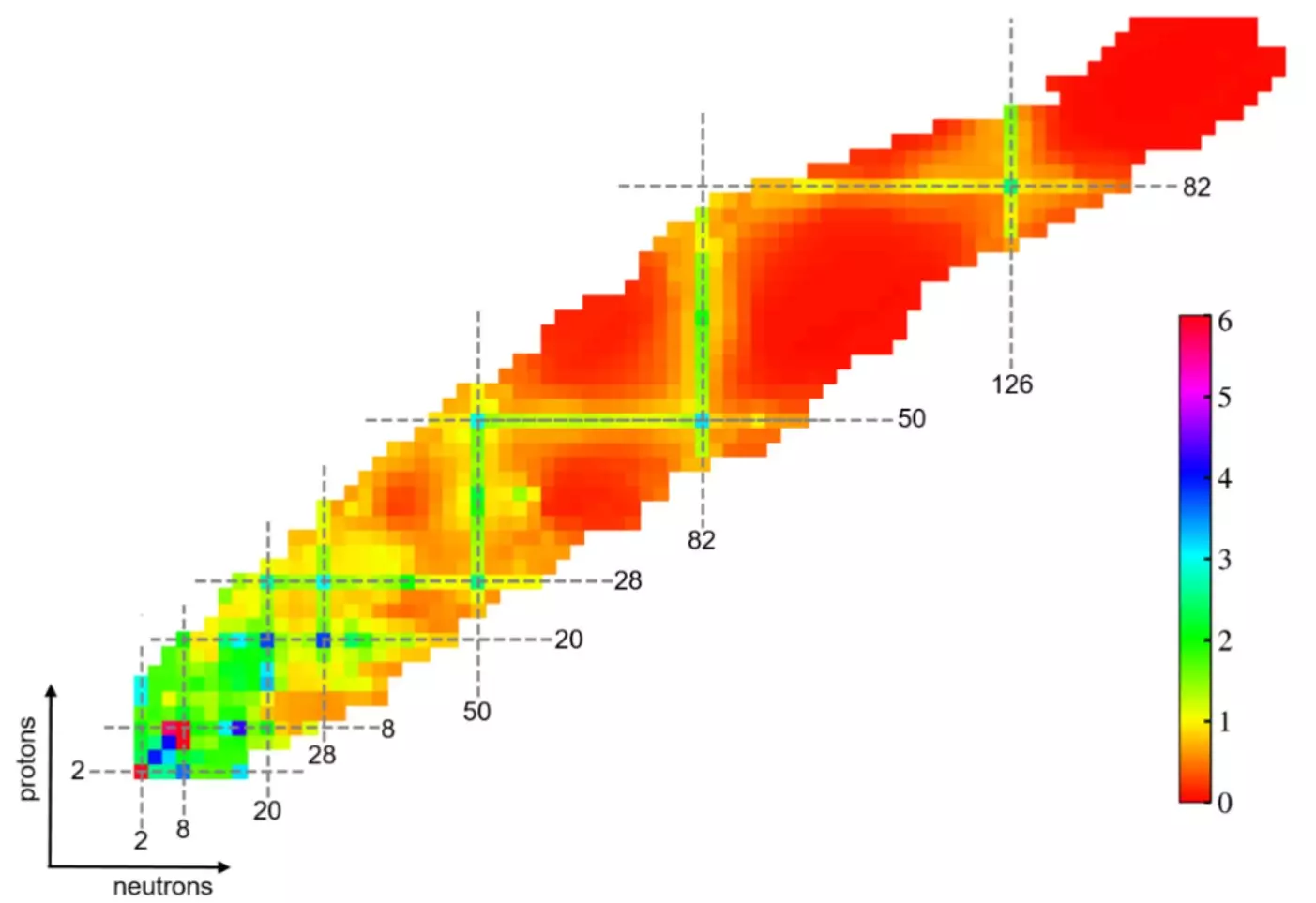In the intriguing realm of nuclear physics, researchers continuously seek to deepen their understanding of the atomic nucleus and its enigmatic properties. A recent collaborative study, spearheaded by scientists from the Institute of Modern Physics (IMP) of the Chinese Academy of Sciences, Huzhou University, and the University of Paris-Saclay, has paved the way for groundbreaking insights into the shell structure of atomic nuclei that are significantly far from the stability line. This exploration, employing advanced machine learning techniques, focuses on the evolution and potential changes of so-called “magic numbers,” which serve as keystones in the existing framework of nuclear stability.
Magic numbers refer to specific quantities of protons or neutrons that confer enhanced stability upon atomic nuclei, observed in numbers such as 2, 8, 20, 28, 50, 82, and 126. The concept originated in the 1930s and has since been foundational in particle physics, representing the underlying shell structure of nuclei. Nevertheless, researchers have begun to question the permanence of these figures, wondering whether they truly remain constant in the face of nuclei that exist in less stable environments. This study aims to answer those critical questions.
The application of machine learning in nuclear physics illuminates the previously complex analytic landscape of nuclear interactions and behaviors. Specifically, the researchers aimed to discern whether traditional magic numbers persist in nuclei like oxygen-28 and tin-100, both of which possess unique characteristics. The study reiterated that these magic numbers might not be fixed, especially when atomic nuclei are found in a state of instability—a notion that provokes further inquiry into nuclear structure and interactions.
The findings from this study are notable, showing a groundbreaking dismissal of the neutron magic number 20 in oxygen-28 while affirming the stability of the magic number 50 in tin-100. Such revelations emphasize the adaptability and variability of nuclear properties in different isotopic environments, suggesting that the nuclear structure remains more fluid than previously believed.
Advanced Methodologies Elevate Predictive Accuracy
Leveraging machine learning allowed researchers to consider myriad features of atomic nuclei, yielding high-precision data reconstruction of the low-lying excited states and electromagnetic transition probabilities. According to Wang Yongjia, co-author from Huzhou University, the precision achieved in this study sets a new benchmark, outperforming existing nuclear models and previous machine learning methodologies. This advance illustrates how sophisticated computational techniques can revolutionize the interpretation of nuclear phenomena, challenging previously held paradigms.
Machine learning’s capacity to process and analyze vast datasets about nuclear properties has unveiled new dimensions in understanding stable and unstable isotopes. By pinpointing discrepancies and unique characteristics, the study not only identifies magical properties but also suggests avenues for enhancing nuclear theoretical models.
The findings of the study extend beyond immediate theoretical frameworks to illuminate pathways for future experimental endeavors. With the guidance derived from this research, scientists are now equipped with enhanced strategies to conduct experimental measurements of low-lying excited energies and electromagnetic transitions. Facilities worldwide, including the High Intensity Heavy-ion Accelerator Facility in China, are poised to benefit from these insights, promising a new era of exploration in nuclear physics where the established bounds of magic numbers can be rigorously tested.
This transformative integration of machine learning into nuclear research opens up numerous possibilities for exploration and understanding. The dynamic nature of atomic nuclei, particularly those existing far from stability, underlines the need for continued investigation, ultimately leading to a refined comprehension of nuclear behaviors and the fundamental forces at play.
Concluding Thoughts
As researchers forge ahead, the interplay of traditional nuclear theories and innovative machine learning applications presents a richer, more complex picture of atomic nuclei. The dynamism witnessed in the magic numbers points toward a challenging yet exciting frontier in nuclear physics, ripe for discovery and understanding. This study serves as a vital stepping stone toward unraveling the layers of nuclear structure, providing tools and insights essential for pioneering research in this fascinating field. The ongoing evolution of machine learning methodologies breathes new life into the pursuit of knowledge about matter at its most fundamental level.


Leave a Reply